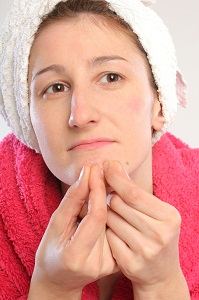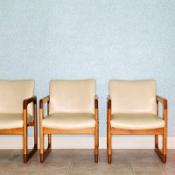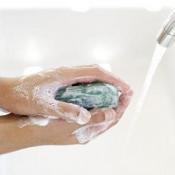 The Diagnostic and Statistical Manual of Mental Disorders serves as the “bible” of mental health practitioners, who rely on it to match diagnostic criteria with behaviors. The American Psychiatric Association periodically examines trends in mental health conditions and recent scientific evidence to revamp the criteria. The latest edition, the DSM-5, is slated for release in May 2013, and the APA recently approved several changes.
The Diagnostic and Statistical Manual of Mental Disorders serves as the “bible” of mental health practitioners, who rely on it to match diagnostic criteria with behaviors. The American Psychiatric Association periodically examines trends in mental health conditions and recent scientific evidence to revamp the criteria. The latest edition, the DSM-5, is slated for release in May 2013, and the APA recently approved several changes.
Among the new diagnoses is excoriation, which is associated with chronic skin-picking. The issue is most common among women between the ages of 30 and 45. It’s classified as an impulse control disorder and is related to obsessive compulsion.
What Is Excoriation?
Although excoriation disorder is the name of the new “official” diagnosis, the issue has been studied for years—sometimes called neurotic excoriation, compulsive skin-picking, dermatillomania, and psychogenic skin-picking. The issue was not included in previous editions of the DSM because it is believed to sometimes be a symptom of another issue.
Skin-picking is common among people with autism spectrum as well as obsessive compulsion. When it does not co-occur with another issue, however, it qualifies for its own diagnosis. Symptoms of the issue include compulsive skin-picking that leads to injuries or wounds as well as stress. Skin-picking is relatively common. Some people pick their skin to the point of bleeding or pain by popping pimples, picking at hangnails, or peeling scabs.
Controversy Surrounding Diagnosis
Whenever the APA adopts new diagnoses or symptoms, there is always some controversy, and excoriation is no exception. Although the diagnosis has received considerably less attention than some other changes, some mental health experts have expressed concern. Because excoriation often is a symptom of an underlying issue, a separate diagnosis might stigmatize people by giving them multiple diagnoses when only one is necessary.
Some clinicians have argued that excoriation does not meet the criteria for a mental health diagnosis and is more akin to a habit. By creating diagnostic criteria for a habit, the DSM might eventually have to include other habits. However, excoriation does sometimes occur on its own, and people with the condition can experience considerable distress, so the APA opted to include it.
How Excoriation Is Treated
When compulsive skin-picking occurs, it’s important to rule out a potential medical cause such as allergies or infection. Occasionally, skin conditions can superficially resemble symptoms of excoriation. Further, excoriation can cause dermatological problems, so patients frequently need dermatological treatment along with mental health treatment.
Antidepressants are the first line of treatment for excoriation. Opioid antagonist medications, which interfere with the body’s ability to respond to endorphins and opioids, also are sometimes effective. Because compulsive skin-picking often co-occurs with anxiety, anti-anxiety medications can be helpful.
Psychotherapy that helps people develop better approaches for dealing with anxiety, enables them to develop better impulse control, and helps patients cope with changes to appearance as a result of excoriation is also a typical part of treatment.
References:
- American Psychological Association. APA concise dictionary of psychology. Washington, DC: American Psychological Association, 2009. Print.
- Brauser, D. (2012, December 3). Experts react to DSM-5 Approval. Medscape Reference. Retrieved from http://www.medscape.com/viewarticle/775526
- Colman, A. M. (2006). Oxford dictionary of psychology. New York, NY: Oxford University Press.
- Neurotic excoriations. (2012, June 27). Medscape Reference. Retrieved from http://emedicine.medscape.com/article/1122042-overview
- Neurotic excoriation. (n.d.). SkinPick. Retrieved from http://www.skinpick.com/neurotic-excoriation

The preceding article was solely written by the author named above. Any views and opinions expressed are not necessarily shared by GoodTherapy.org. Questions or concerns about the preceding article can be directed to the author or posted as a comment below.


 Not a Fan of the DSM-V ... or Its Predecessors
Not a Fan of the DSM-V ... or Its Predecessors Mysophobia: the Fear of Germs
Mysophobia: the Fear of Germs Breaking Free from Anxiety to Reclaim a Life Worth Living
Breaking Free from Anxiety to Reclaim a Life Worth Living 

Please fill out all required fields to submit your message.
Invalid Email Address.
Please confirm that you are human.
Leave a Comment
By commenting you acknowledge acceptance of GoodTherapy.org's Terms and Conditions of Use.